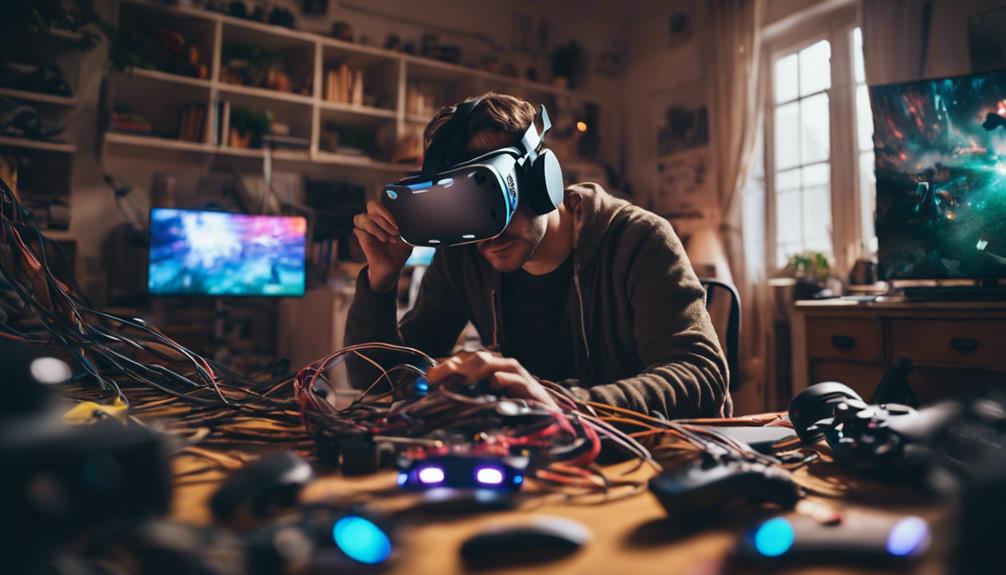As our population ages, technology has become an essential tool in improving the quality of life for seniors. With the rapid advancement of gadgets designed specifically for the elderly, individuals can maintain their independence, stay connected with loved ones, and manage their health more effectively. This article explores various elderly technology gadgets, their benefits, and how they can make a significant difference in the lives of seniors.
The Importance of Technology for Seniors
Technology is no longer just for the younger generations. As seniors are becoming more tech-savvy, gadgets tailored for their needs are making a significant impact. Here are a few reasons why technology is crucial for the elderly:Definition Of A GadgetLong Distance GadgetsGadgetized Panda Translation
- Enhanced Communication: Technology helps seniors stay connected with family and friends, reducing feelings of isolation.
- Health Management: Gadgets can monitor health conditions, remind users to take medications, and even alert caregivers in emergencies.
- Increased Independence: Many technologies empower seniors to perform daily tasks without assistance, fostering a sense of autonomy.
- Safety Features: Gadgets designed for seniors often include safety measures, providing peace of mind for both seniors and their families.
Essential Gadgets for Seniors
There is a wide range of technology gadgets specifically designed to cater to the needs of older adults. Here are some of the most impactful devices:
1. Medical Alert Systems
Medical alert systems are vital for seniors, as they provide immediate assistance in case of an emergency. These devices typically come with a wearable button that can be pressed to connect to a monitoring center or family member. Examples include:
- Life Alert: Known for its reliability, this system offers 24/7 monitoring and a portable emergency button.
- Philips Lifeline: This service provides a variety of options, including in-home and mobile systems, ensuring help is always within reach.
2. Smart Home Devices
Smart home technology is revolutionizing how seniors manage their living environments. Devices that can be controlled via voice or smartphone app enhance convenience and safety:
- Amazon Echo: This voice-activated speaker can play music, set reminders, and even control other smart devices, making daily tasks easier.
- Smart Thermostats: Devices like the Nest Learning Thermostat can adjust temperatures automatically, ensuring comfort without the need for manual adjustments.
3. Health Monitoring Gadgets
Health monitoring devices allow seniors to take charge of their health. These gadgets can track vital signs and send data to healthcare professionals:
- Fitbit: This fitness tracker monitors heart rate, steps, and sleep patterns, encouraging seniors to maintain an active lifestyle.
- Blood Pressure Monitors: Home devices that allow seniors to check their blood pressure regularly, providing valuable information for doctors.
4. Tablets and E-Readers
Tablets and e-readers provide seniors with access to information, entertainment, and social media. These devices are often user-friendly and lightweight:
- iPad: Known for its intuitive interface, the iPad allows seniors to video chat, browse the internet, and read books easily.
- Kindle: The Kindle e-reader makes reading books more accessible with adjustable font sizes and built-in dictionaries.
5. Assistive Technology
Assistive technology refers to devices that aid individuals with disabilities or age-related limitations. This category includes:
- Hearing Aids: Modern hearing aids come with Bluetooth connectivity, allowing seniors to stream audio directly from their smartphones.
- Smart Pill Dispensers: These devices remind seniors to take their medications and can dispense the correct dosages at scheduled times.
Case Studies: Successful Integration of Technology in Seniors’ Lives
Real-world examples illustrate how technology has positively impacted the lives of seniors:
Case Study 1: The Role of Tablets in Social Connectivity
A community center in Florida implemented a tablet program for seniors to combat loneliness. Through training sessions, seniors learned to use tablets to connect with family via video calls and engage in social media. The results were striking:
- 70% of participants reported feeling less isolated.
- 85% expressed a desire to continue using technology for social interaction.
Case Study 2: Health Monitoring with Wearable Devices
A group of seniors in a New York assisted living facility participated in a pilot program using Fitbit devices to monitor their physical activity. The outcomes included:
- A 40% increase in daily activity levels.
- Improved overall health metrics, including decreased blood pressure.
Challenges and Considerations in Adopting Technology
While technology offers many benefits, there are challenges that seniors may face in adopting these gadgets:
- Technological Literacy: Some seniors may struggle with understanding how to use new devices.
- Affordability: High costs of devices can be a barrier for some elderly individuals.
- Privacy Concerns: Many seniors are apprehensive about sharing personal data with technology companies.
Conclusion: Embracing the Future of Elderly Care
As technology continues to evolve, elderly technology gadgets play a pivotal role in enhancing the lives of seniors. From medical alert systems to smart home devices, these tools not only improve safety and health management but also foster social connections and independence. While challenges remain in technology adoption, the positive impact of these gadgets on seniors’ quality of life cannot be overstated. By embracing these innovations, we can empower the elderly to live fuller, healthier, and more connected lives.
